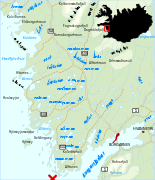This is an old revision of this page, as edited by French Thutmose III (talk | contribs) at 09:54, 21 July 2024. The present address (URL) is a permanent link to this revision, which may differ significantly from the current revision.
Revision as of 09:54, 21 July 2024 by French Thutmose III (talk | contribs)(diff) ← Previous revision | Latest revision (diff) | Newer revision → (diff) French scientistYou can help expand this article with text translated from the corresponding article in French. (June 2018) Click for important translation instructions.
|
| Jean-Baptiste Auguste Étienne Charcot | ||||||||||||||||||
|---|---|---|---|---|---|---|---|---|---|---|---|---|---|---|---|---|---|---|
 Charcot in 1925 Charcot in 1925 | ||||||||||||||||||
| Born | 15 July 1867 (1867-07-15) Neuilly-sur-Seine, France | |||||||||||||||||
| Died | 16 September 1936 (1936-09-17) (aged 69) at sea, off Iceland | |||||||||||||||||
| Nationality | French | |||||||||||||||||
| Occupation(s) | Polar explorer, doctor | |||||||||||||||||
| Spouse | Jeanne Hugo (1896–1905; div.) | |||||||||||||||||
| Sports career | ||||||||||||||||||
| Sailing career | ||||||||||||||||||
| Class(es) | 0 to 0.5 ton Open class | |||||||||||||||||
Medal record
| ||||||||||||||||||
| Updated on 2014-02-08 | ||||||||||||||||||
Jean-Baptiste Étienne Auguste Charcot better known in France as Commandant Charcot (15 July 1867 in Neuilly-sur-Seine near Paris – 16 September 1936 at sea (30 miles north-west of Reykjavik, Iceland), born in , was a French scientist, medical doctor and polar scientist. His father was the neurologist Jean-Martin Charcot (1825–1893).
Life
Jean-Baptiste Charcot was appointed leader of the French Antarctic Expedition with the ship Français exploring the west coast of Graham Land from 1904 until 1907. The expedition reached Adelaide Island in 1905 and took pictures of the Palmer Archipelago and Loubet Coast. From 1908 until 1910, another expedition followed with the ship Pourquoi Pas ?, exploring the Bellingshausen Sea and the Amundsen Sea and discovering Loubet Land, Marguerite Bay, Mount Boland and Charcot Island, which was named after his father, Jean-Martin Charcot. He named Hugo Island after Victor Hugo, the grandfather of his wife, Jeanne Hugo.
Later on, Jean-Baptiste Charcot explored Rockall in 1921 and Eastern Greenland and Svalbard from 1925 until 1936. He died when Pourquoi-Pas ? was wrecked in a storm off the coast of Iceland in 1936.
Charcot participated in many sports. He won two silver medals in sailing at the Summer Olympics of 1900.
Dedications

A monument to Charcot was created in Reykjavík, Iceland by sculptor Einar Jónsson in 1936 and another by Ríkarður Jónsson in 1952.
Charcot has had various places and things named after him:
- Charcotiana, a lichen genus
- Charcot Bay, Antarctica
- Charcot Fan, an abyssal fan in the Southern Ocean
- Charcot Land, a peninsula in Greenland
- Le Commandant Charcot, an icebreaking cruise ship
References
- "Jean-Baptiste-Étienne-Auguste Charcot | French explorer and oceanographer". Encyclopedia Britannica. Retrieved 12 June 2018.
- "Jean-Baptiste Charcot". thefreedictionary.com. The Great Soviet Encyclopedia, 3rd Edition. 1970–1979. Retrieved 12 June 2018.
- Haas LF (October 2001). "Jean Martin Charcot (1825–93) and Jean Baptiste Charcot (1867–1936)". J. Neurol. Neurosurg. Psychiatry. 71 (4): 524. doi:10.1136/jnnp.71.4.524. PMC 1763526. PMID 11561039. and here.
- Bill Mallon (2009) . The 1900 Olympic Games: Results for All Competitors in All Events, with Commentary. Jefferson, North Carolina: McFarland. p. 19. ISBN 9780786440641.
- "Jean-Baptiste Charcot". Olympedia. Retrieved 29 December 2020.
- Søchting, Ulrik; Garrido-Benavent, Isaac; Seppelt, Rod; Castello, Miris; Pérez-Ortega, Sergio; De Los Ríos Murillo, Asunción; Sancho, Leopoldo Garcia; Frödén, Patrik; Arup, Ulf (2014). "Charcotiana and Amundsenia, two new genera in Teloschistaceae (lichenized Ascomycota, subfamily Xanthorioideae) hosting two new species from continental Antarctica, and Austroplaca frigida, a new name for a continental Antarctic species". The Lichenologist. 46 (6): 763–782. doi:10.1017/S0024282914000395.
- Le "Pourquoi pas?" dans l'Antarctique 1908–1910, Arthaud, Paris, 1996, ISBN 2-7003-1088-8
External links
- Jean-Baptiste Charcot at Olympics.com

- Jean-Baptiste Charcot at Olympedia

- Sur les traces du "Pourquoi-Pas?"
- Icelandic website in memory of Jean-Babtiste Charcot"
- Newspaper clippings about Jean-Baptiste Charcot in the 20th Century Press Archives of the ZBW
-
 Funeral of Charcot and his men in front of the Notre Dame, Paris, 1936
Funeral of Charcot and his men in front of the Notre Dame, Paris, 1936
-
 Board in memory of Charcot. Ittoqqortoormiit, Greenland
Board in memory of Charcot. Ittoqqortoormiit, Greenland
-
 The Pourquoi-Pas?, Charcot's ship
The Pourquoi-Pas?, Charcot's ship
-
 Adelaide Island viewed from the west
Adelaide Island viewed from the west
-
 Location of where The Pourquoi-Pas stranded
Location of where The Pourquoi-Pas stranded
- 1867 births
- 1936 deaths
- Captains who went down with the ship
- Scientists from Neuilly-sur-Seine
- French explorers
- Explorers of Antarctica
- Explorers of the Arctic
- Graham Land
- Charcot family
- 20th-century French physicians
- Grand Officers of the Legion of Honour
- Academic staff of the École pratique des hautes études
- Members of the French Academy of Sciences
- Recipients of the Cullum Geographical Medal
- Burials at Montmartre Cemetery
- Antarctic Peninsula
- French male sailors (sport)
- Sailors at the 1900 Summer Olympics – 0 to .5 ton
- Olympic sailors for France
- Medalists at the 1900 Summer Olympics
- Olympic silver medalists for France
- Olympic medalists in sailing
- Accidental deaths in Iceland
- Sportspeople from Hauts-de-Seine
- Sailors at the 1900 Summer Olympics – Open class